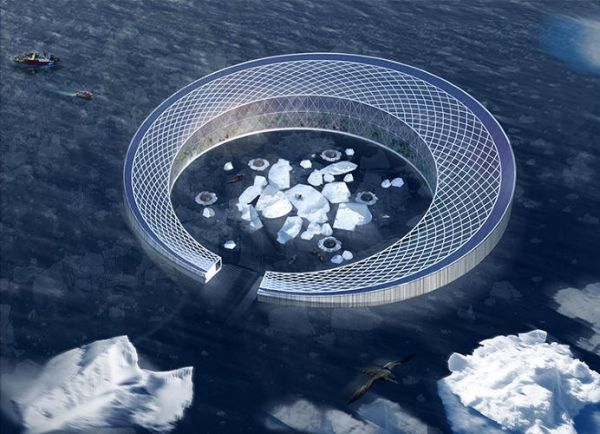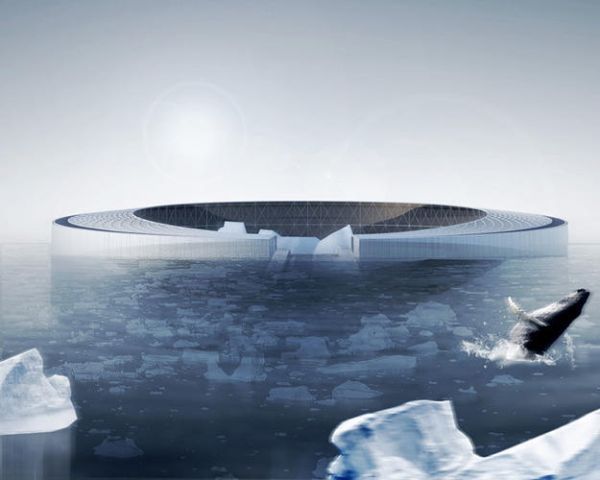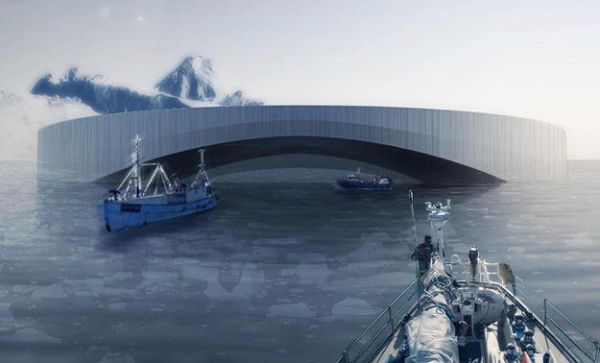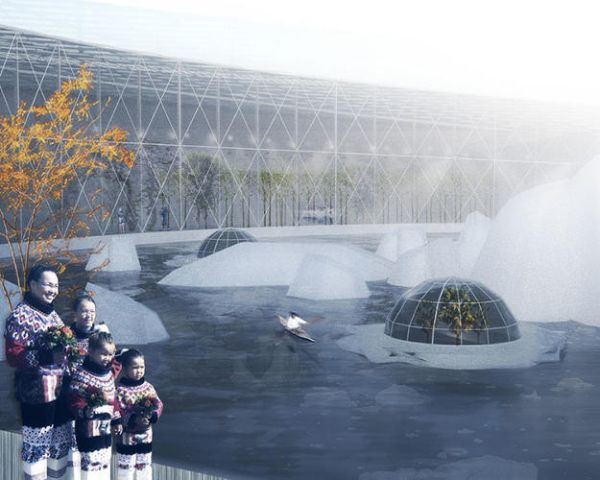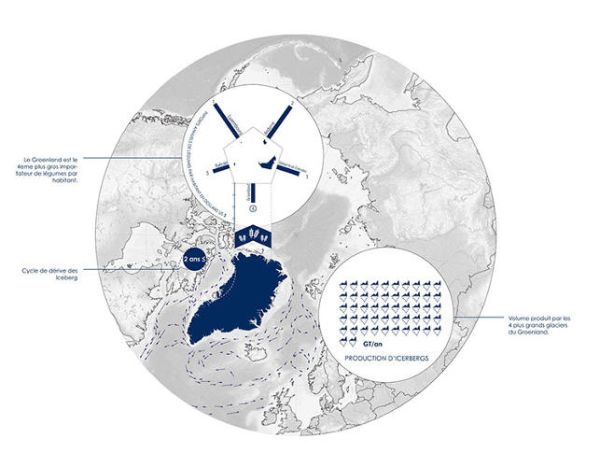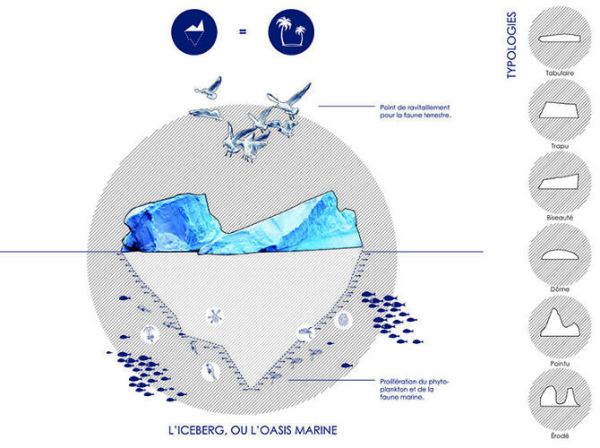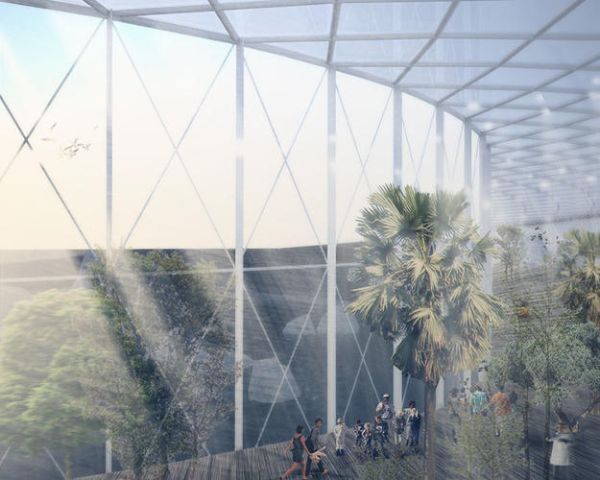The Arctic Harvester: Self-sufficient hydroponic village harvests icebergs for energy
The icebergs are melting, and it’s unlikely that this climatic disaster will ever stop, at least, not with the present pace untamed human activities. While it’s inevitable to stop the melting under increasing green house effect, how about utilizing the same icebergs for producing energy, vegetables, crops, and a small habitable community space that’ll keep floating in the waters between Greenland and the coast of Labrador for couple of years. The produce will be shipped to the coastal areas of Greenland, thus, relieving it from the import of almost every edible and goods. And that too with no fuel, no grid energy, and no external supply of anything at all.
A team of French students, who happens to be working on a project regarding the polar icebergs, conceived the idea of the Arctic Harvester, as they call it. The Arctic Harvester is a circular structure that floats freely on waters, have solar panels installed on the complete outer circle for energy production, can also produce energy through osmosis (a process that uses fresh waters and salt waters), and have a greenhouses which will produce vegetables, fruits etc. with the supply of fresh water. The circular design is targeted at making the structure an iceberg collector.
The bay of the Arctic Harvester is the space where these icebergs will be squeezed for their nutrient rich fresh water. The space on this floating hydroponic village can accommodate 800 people, and is capable of harvesting sufficient energy for all the on-board members and the plants.
This floating island doesn’t need propellers, and is designed to float with the currents as the icebergs do. The arrangements and the equipments for the shipments of the harvest are also incorporated into the design. The best part is that Greenland will get rid of a great burden of importing goods.
The concept is the brain child of a team of students from the École Nationale Supérieure d’Architecture Paris Malaquais. Meriem Chabani, one of the students said, “Facing the problem of global warming, we decided to take a pragmatic approach. We’re combining negatives into one positive proposal. We had what seemed to us a massive resource on one hand, and a massive lack–no local produce–on the other.”
Regarding the design of their concept, Meriem further said, “the vessel as a whole is designed to drift with the currents that carry the icebergs during the course of their lives, often circling on the ocean currents between Greenland and the coast of Labrador for up to two years, before heading south past the east coast of the United States. The central bay is thus the heart of the Harvester’s agricultural process, the centre of its sustainable energy production, as well as an ice garden, offering social spaces and floating communal greenhouses for use by the inhabitants. “
The same concept had won the students the first prize in the ‘Innovation and Architecture for the Sea’ category of the Jacques Rougerie Foundation International Architecture Competition. Presently, the concept is looking for funds along with ongoing talks with Polarisk Analytics. Polarisk is based in London, and it’s been working in Polar Regions for long.
Via: Fastcoexist
